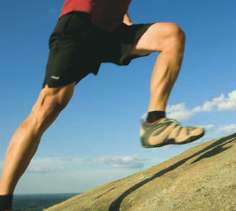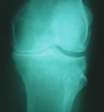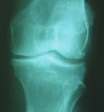Basic HTML Version





Women can
participate in
10-km racewalks
for the first time in
1992
in Barcelona.
Racing for China,
Yueling Chen
becomes the first
Asian woman to
win gold in a track
and field event.
In Sydney in
2000
, the
women’s 10-km race
is replaced with the
standard 20-km, with
Wang Liping taking
the gold for China. On
the men’s side, Robert
Korzeniowski of Poland
makes history by taking
gold in both the 20-km
and 50-km racewalks.
In
2012
, American racewalker
Erin Taylor-Talcott achieves
a qualifying time for the 2012
Olympic trials in the 50-km
racewalk. Though she will not
be able to compete in the men’s
event, she has been allowed to
participate in the trial race, which
could open the door to women
competing at the longer distance.
—
Compiled by Felicia Campbell
racewalking at
age 9 because
he wanted to go
to the National
Junior Olympic
Gameswithhis older sister, Tricia, whowas
competing in the high jump and hurdles.
Back then his favorite sport was swim-
ming, but he suffered from epilepsy and
the seizureswould force himto hang on to
the ropes mid-meet to keep from drown-
ing. A er his swimming coach made him
quit for safety reasons, Barron became a
devoted racewalker.
In 2006, at age 13, he underwent two
surgeries to isolate and splice the part of
his brain responsible for his epilepsy. That,
along with medication, kept him seizure-
free and healthy enough for racewalking.
Since therewasnohighschool racewalking
team, his parents home-schooled himdur-
ing his junior and senior years so he could
travel to San Diego to train with Seaman.
Barron’s father, Bruce, came along. “Trevor
would be walking and his father would be
running and they would be discussing
biology or Russian history,” Seaman says.
“Trevor is not your typical kid.”
The turning point of Barron’s career
was the 2009 world championships,
where he placed a disappointing fourth.
Upon returning home, he put on a Lance
Armstrong “Live Strong” rubber bracelet,
writing “Don’t regret” on it to motivate
himself during training. The next year, he
went ona tear, breaking record a er record
in the junior division.
Coach Jaime says the racewalking
community has high hopes for Bar-
ron in London. But if he doesn’t medal
there, he has plenty of future Olympic
opportunities, since it’s not uncommon
for racewalkers to compete into their 30s
and 40s. As much as Barron would like an
Olympic Medal, though, he knows it will
not change his sport. For that, he would
like to see racewalkers participate in high
school track meets, win NCAA scholar-
ships, land shoe endorsement deals. And
a li le respect—yes, thatwouldbenice too.
Hemispheres
contributor
CRISTINA
ROUVALIS
admits to trying racewalking,
though in the privacy of her backyard.
WALK THEWALK
Barron striding to
victory at the 2009 USA
Track and Field national
junior championships
Located at 1001 N.E. 125th Street, Miami, Florida,
The Center For
Regenerative Medicine
includes a team of professionals that are
dedicated to improve your quality of life, paving the way to enhance
the science of non-surgical orthopedic medicine. World champions,
sports legends, professional and amateur athletes, dancers, and
people with just plain pain and arthritis go to
The Center For
Regenerative Medicine
for non-surgical orthopedic care. Using the
facility to improve their condition, thousands of successful cases
have been treated over the past nine years.
A
NON-SURGICAL
TECHNIQUE TO FIGHT
AGAINST ARTHRITIS AND SPORTS INJURIES
For more information please visit:
www.arthritisusa.net
or call (305) 866-8384
International: (305) 891-4686
THE CENTER FOR REGENERATIVE MEDICINE
The Knee Diaries:
SJ is a 60-year-old male with bone on bone osteoarthritis of the left
knee. An X-ray showed arthritis of the knee (X-ray on the left). Patient started receiving
treatments at The Center For Regenerative Medicine. Today he is feeling better (X-ray
on the right).
This is how it works:
The physician introduces
Cell Therapy
into damaged, arthritic
cells by means of a precise injection. This process is followed by infrared laser as well
as several other modalities including Collateral Artery Flow Exercises (C.A.F.E.), in
order to accelerate the process. Depending on tissue damage, severity of the condition
and the size of the joint that needs to be injected, people usually need a series of 1 to
6 treatments to improve. There is usually no down time, and people can go back to
their usual activities or work immediately. The treatments can help most musculoskel-
etal problems such as low back pain, neck pain, knee pain, shoulder pain, whiplash,
sciatica, tendinitis, sprain, strains, torn ligaments and cartilage damage.
63
The Fan
||
culture
JEFF SALVAGE/RACEWALK.COM

